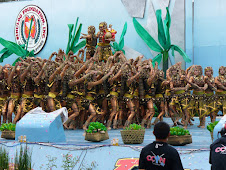Kalakbay at Katoto ... This is how I see and describe myself as teacher, preacher, counselor, and writer. Thirty years is a long time to be in teaching work. If there is anything I learned in those years, it is the humbling realization that lifelong learning is as much my need as my students'. Teaching may be what teachers like me do, but learning is what everybody needs to do. Teaching is unidirectional, but learning is bi-directional. Teaching is optional, but learning is an imperative for everyone.
Lifelong learning is a journey, and even a perpetual learner like a teacher can never do it alone. A teacher may consider his/her job done once the course of instruction is completed. A lifelong learner, on the other hand, is on a pilgrim-journey with fellow learners.
When I look back at the past three decades, I am happy to see myself as a teacher. But when I give a deeper look at life beyond those thirty years, I am awed at what I see. And what I see is the glaring truth that, at bottom, there is precious little for me to teach others, but a whole lot more for me to learn from them.
Kalakbay at Katoto conjures up images of one in journey with others, in this pilgrimage of faith and life. Kalakbay connotes someone who simply journeys with others. Katoto, on the other hand, which comes from the same Tagalog root word "patoto" or "path," connotes someone who, not only journeys with others, but one who shares the same pathways, onwards to a common goal, a common destination, a common calling. I have encountered so many in my little more than half-a-century of life in this world who, at some point, journeyed with me. But few among them share the same paths as I still do. I have taught and journeyed with so many past students. Somewhere along the way, they moved on, pursuing different paths in their own, ongoing life journey. I was once upon a time, their "kalakbay," but no longer their "katoto."
And yet, the Gospel ideals of the journey to Emmaus continue to pose as a challenge to me as a pilgrim and as a learner. The Risen Lord did not just journey with two distressed and probably depressed disciples on their way to the uncertainties of Emmaus. He was not simply an erstwhile "kalakbay." He became truly and thoroughly, their "katoto." Jesus not only showed them the way. He led them to a common path of discovery and enlightenment. And that path led, not to Emmaus, but to what Emmaus stood for.
After thirty years of "teaching," twenty-five of which were spent as a priest, I thank all those who journeyed with me and, therefore, also taught me. In a most special way, I thank all those who, by submitting themselves voluntarily to my guidance, gave meaning and substance to what I still hope to continue on becoming ... KALAKBAY AT KATOTO!
Monday, December 17, 2007
Subscribe to:
Posts (Atom)


